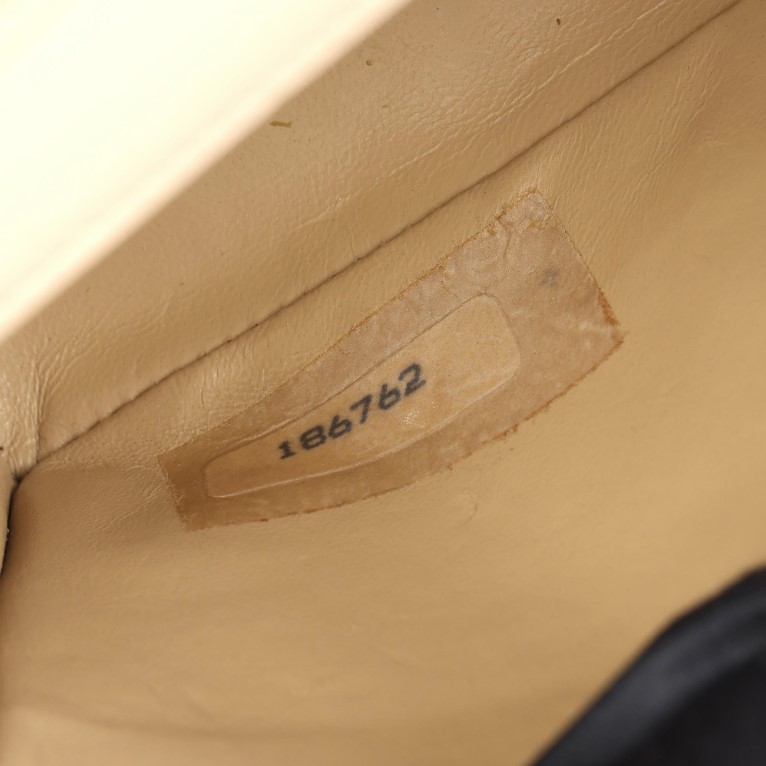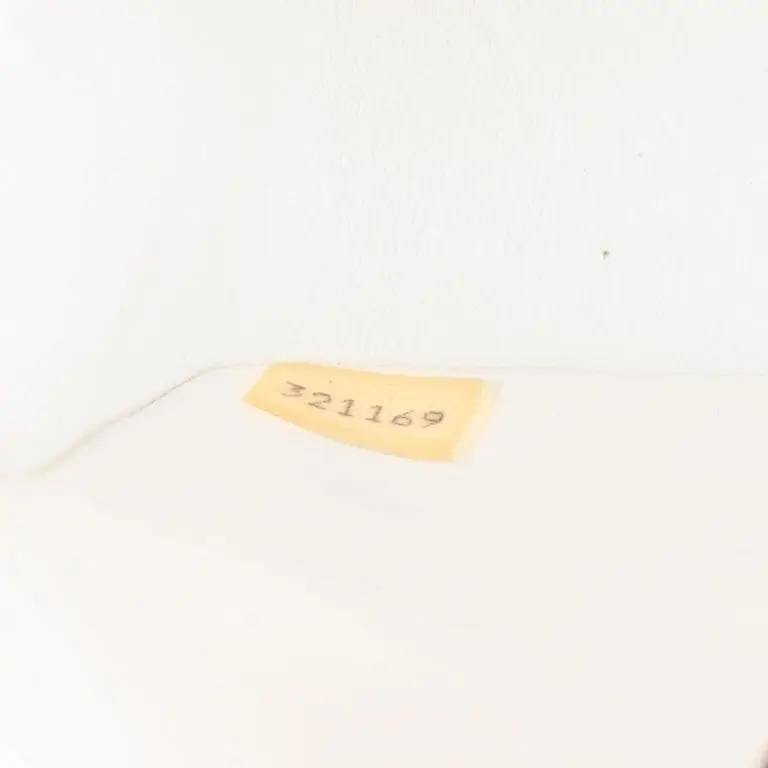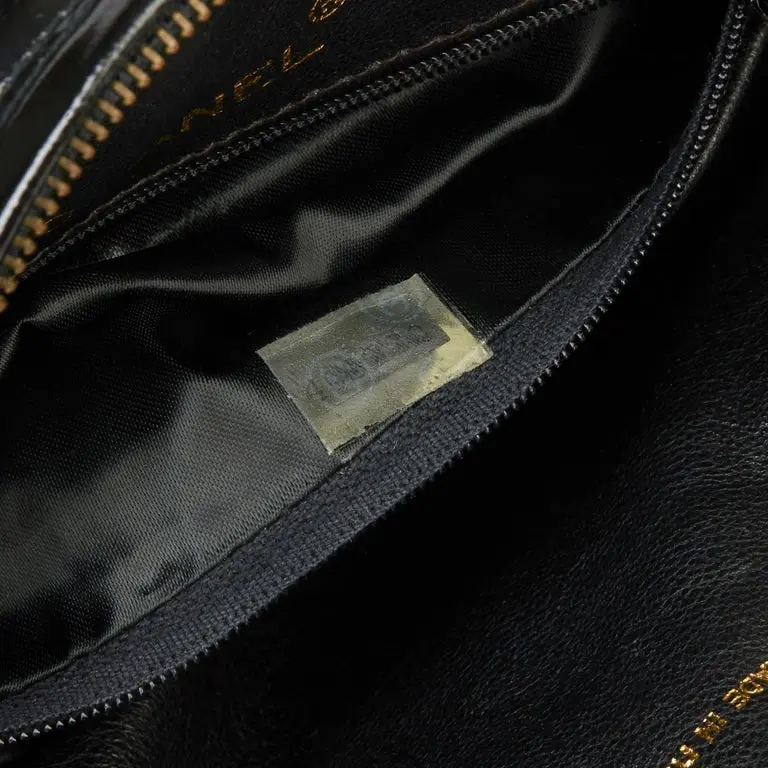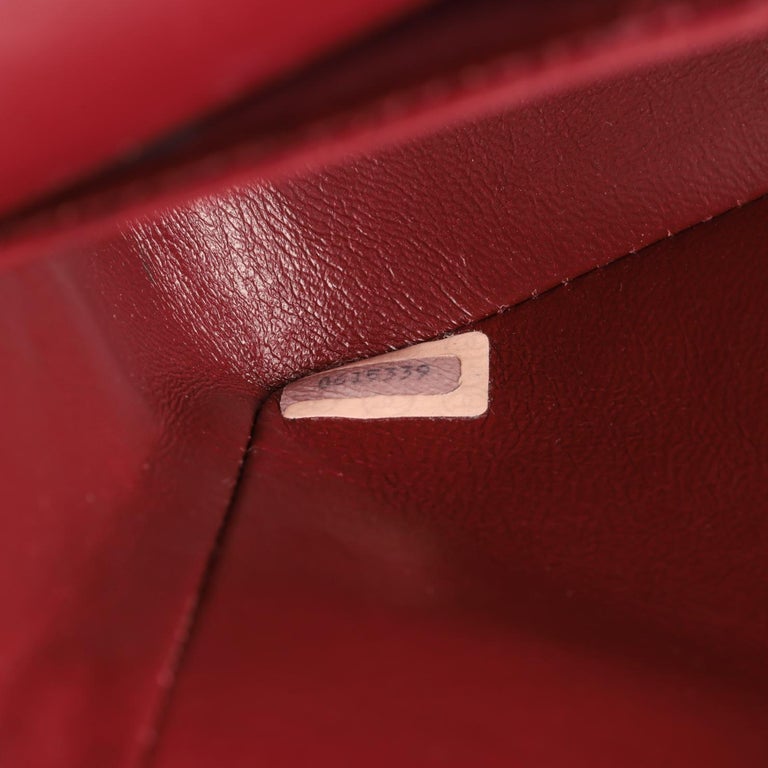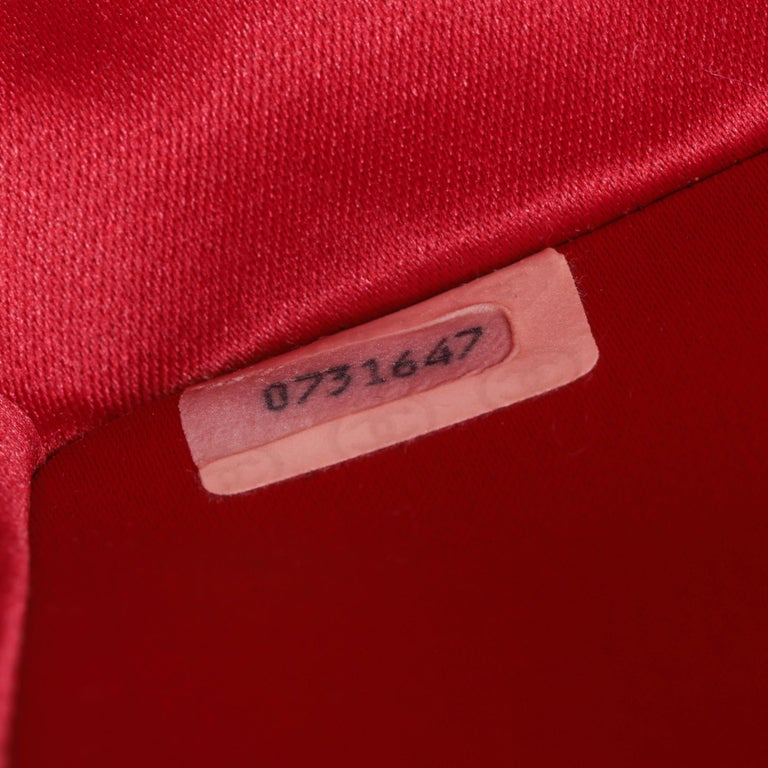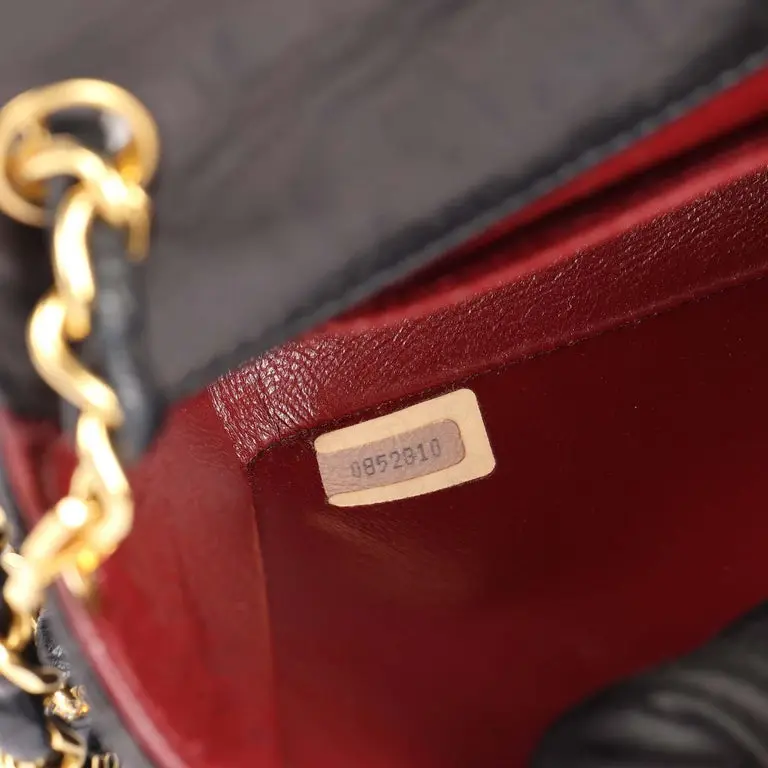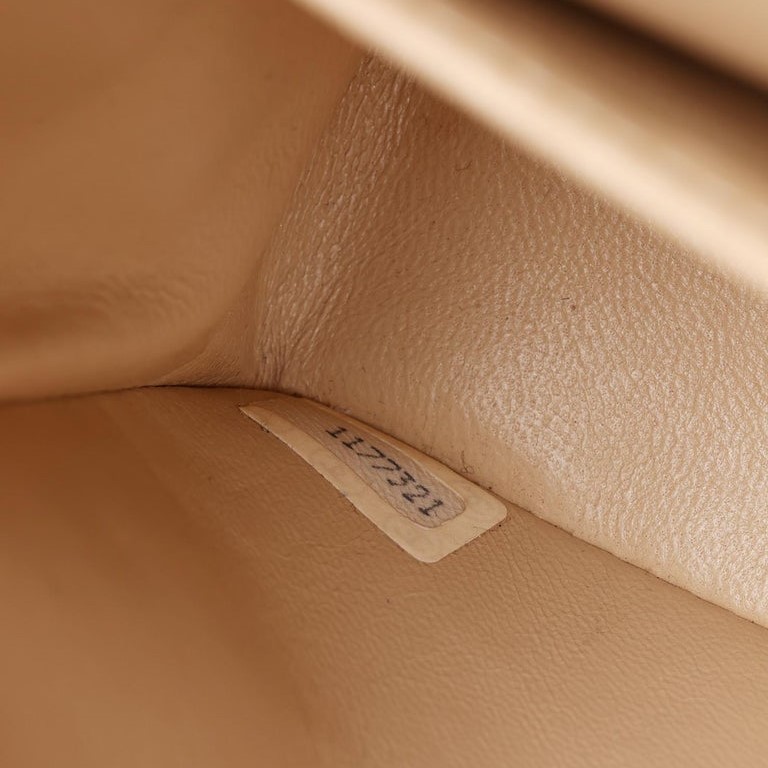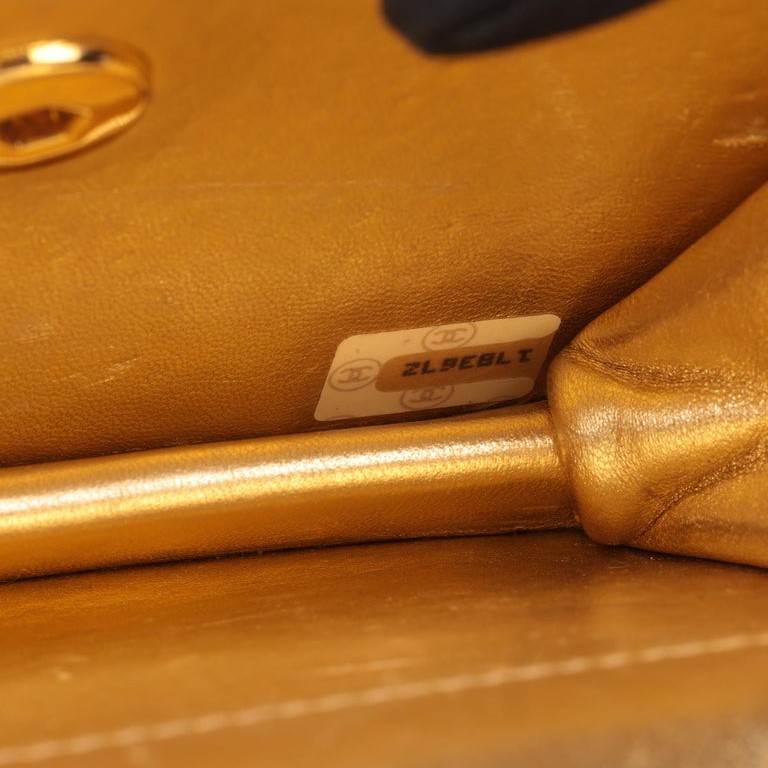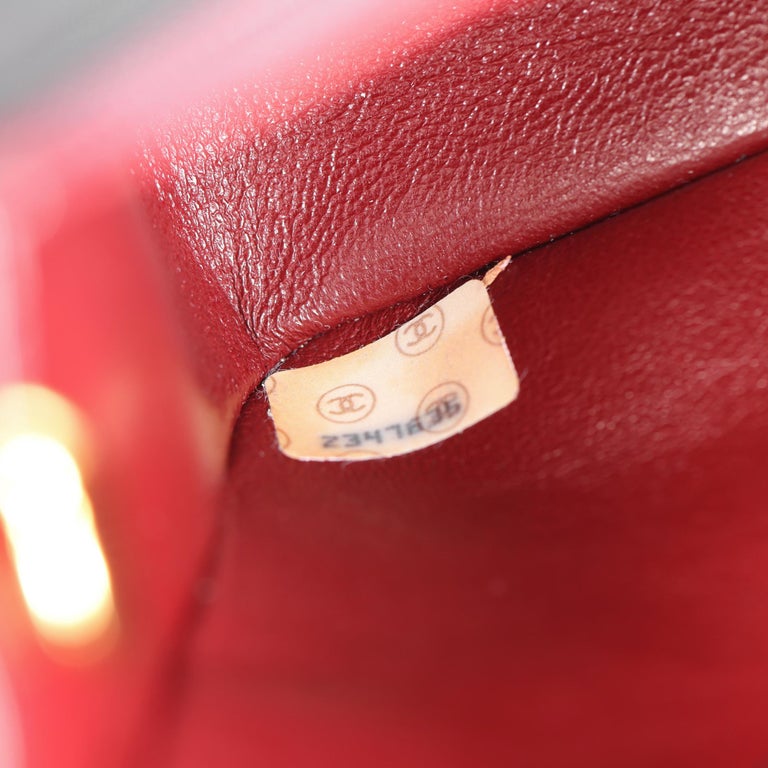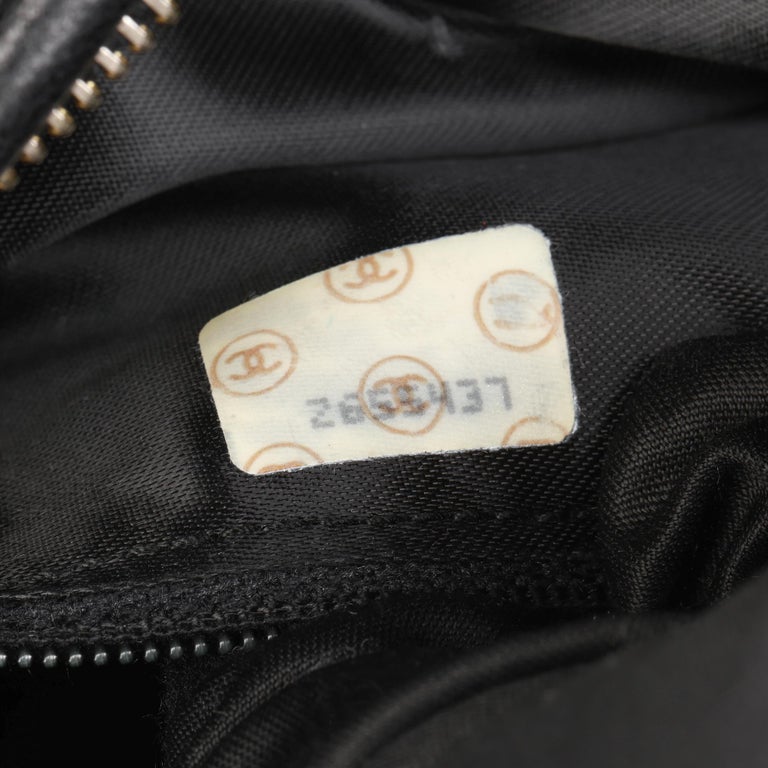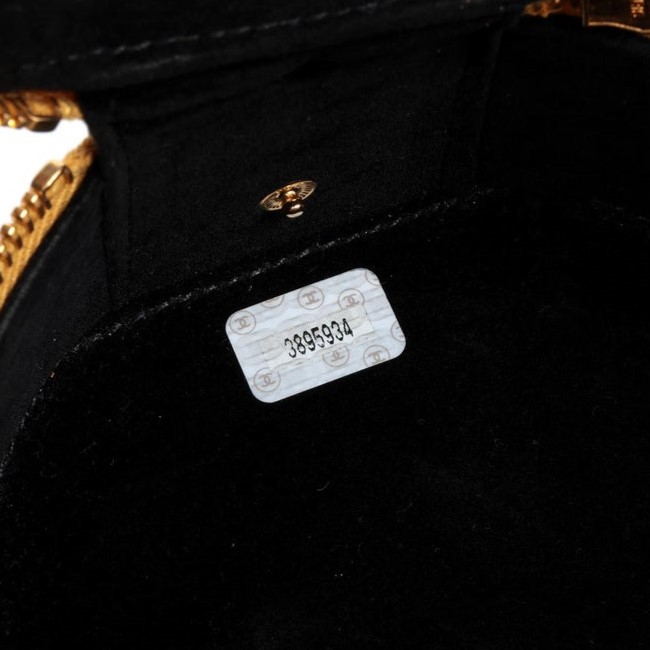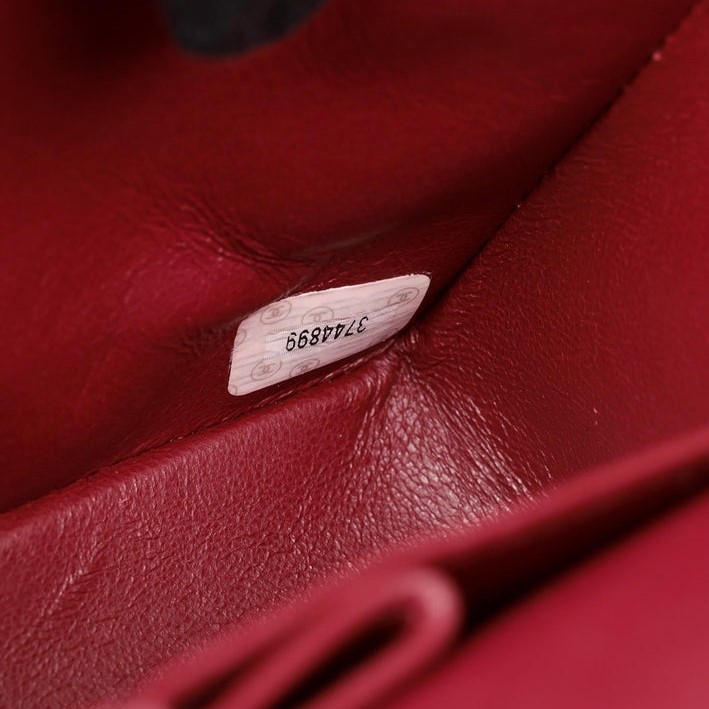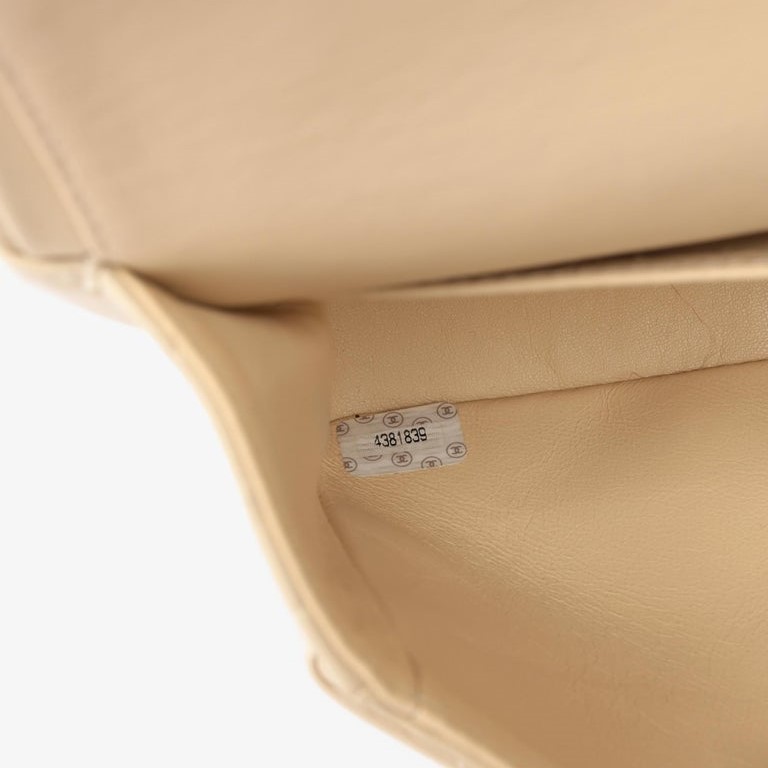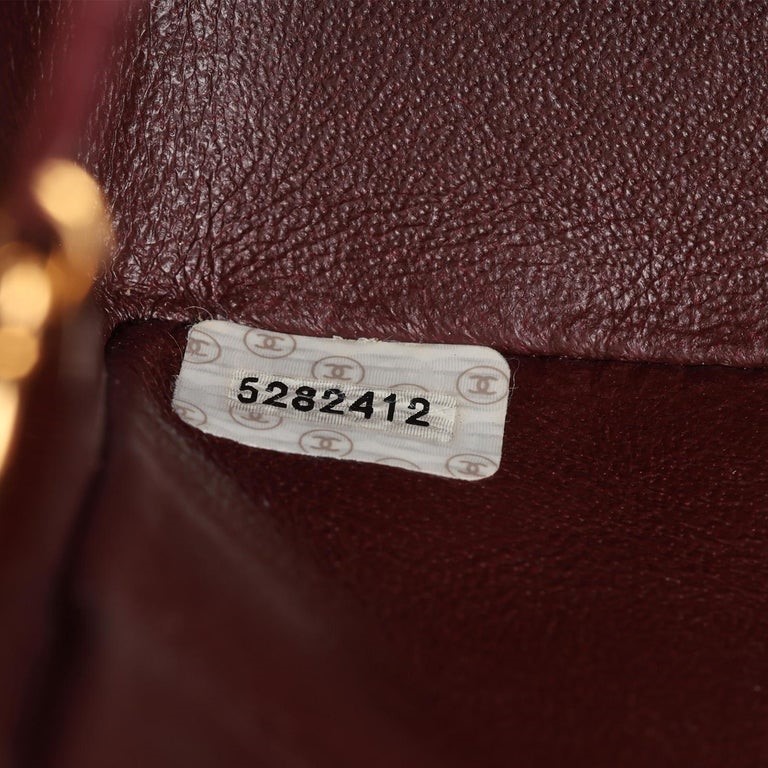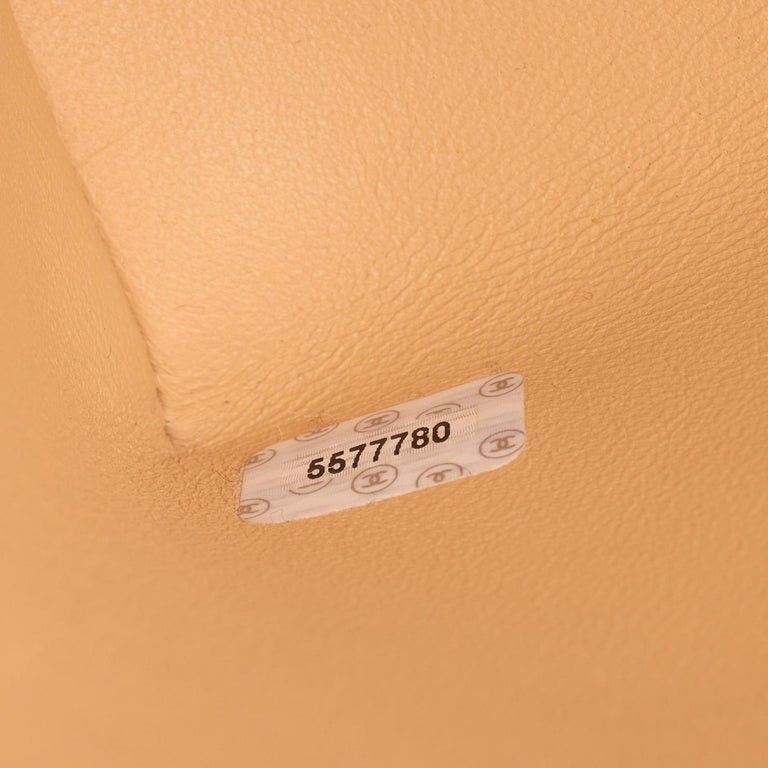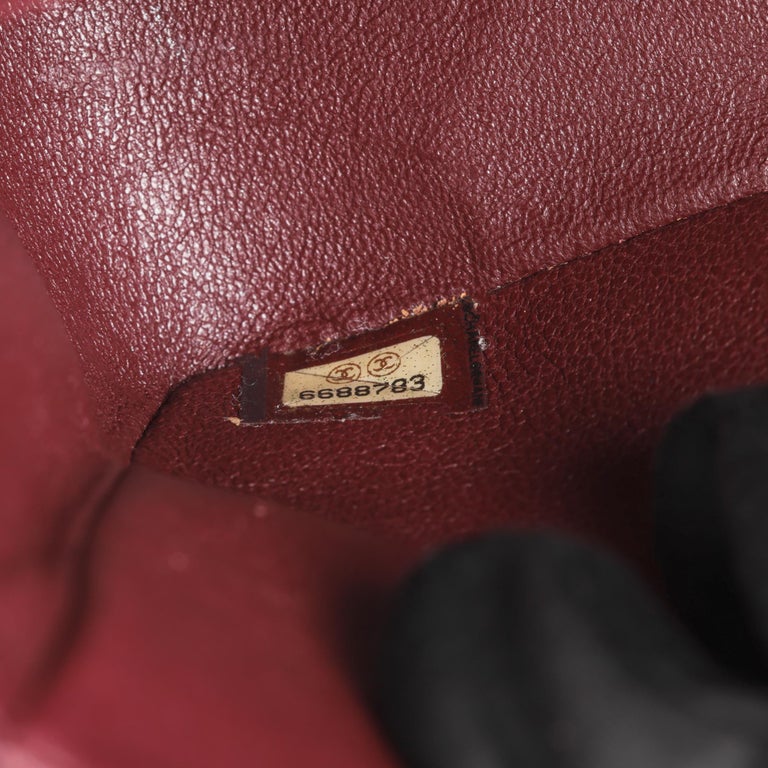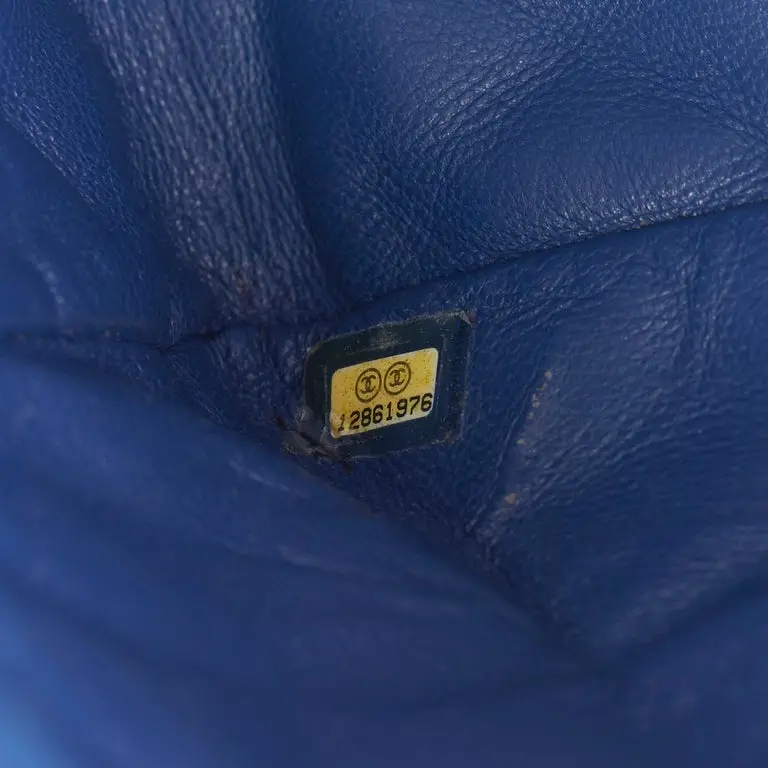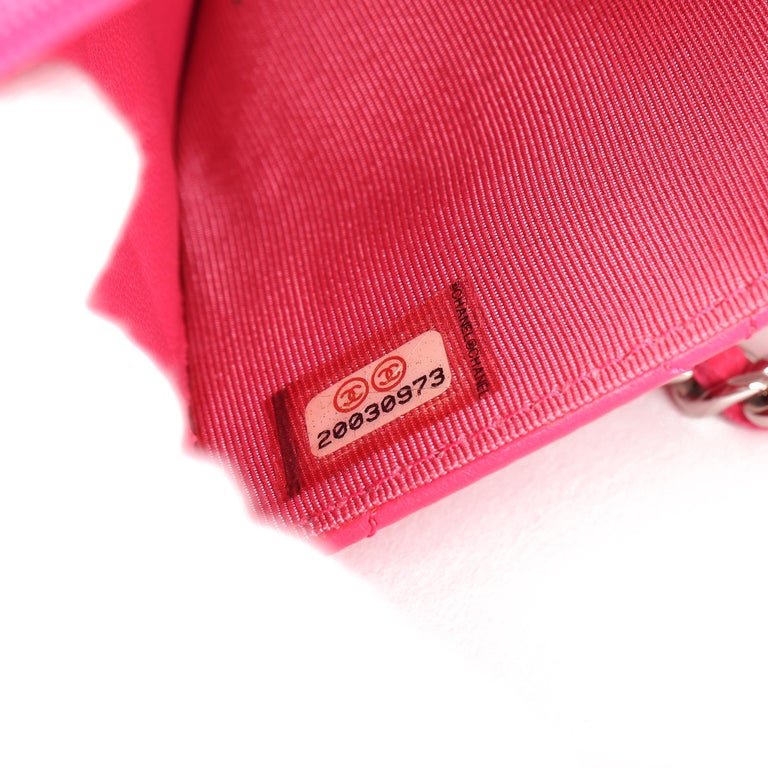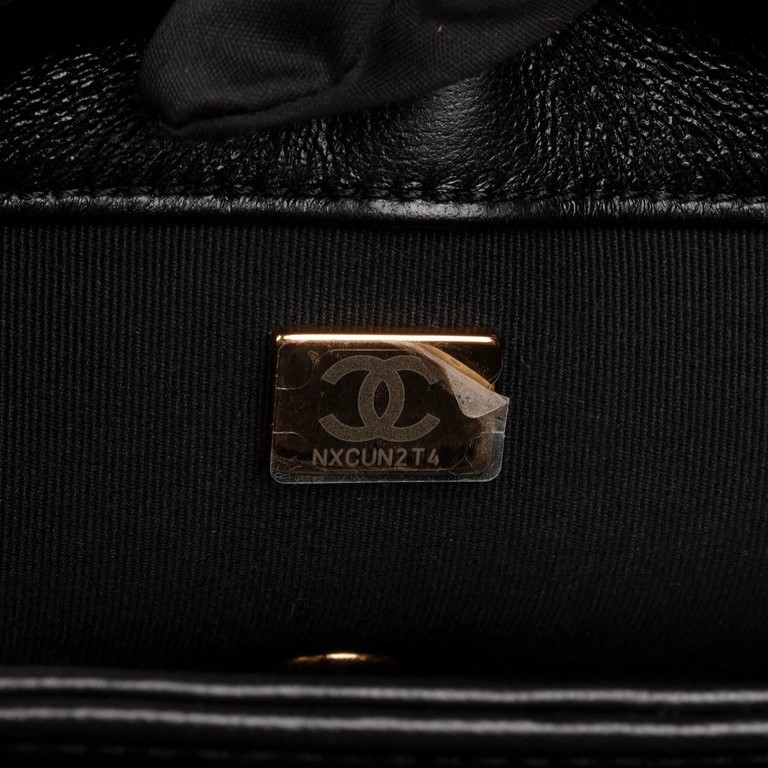The Ultimate Guide to Chanel Date Codes: History, Types & Authentication
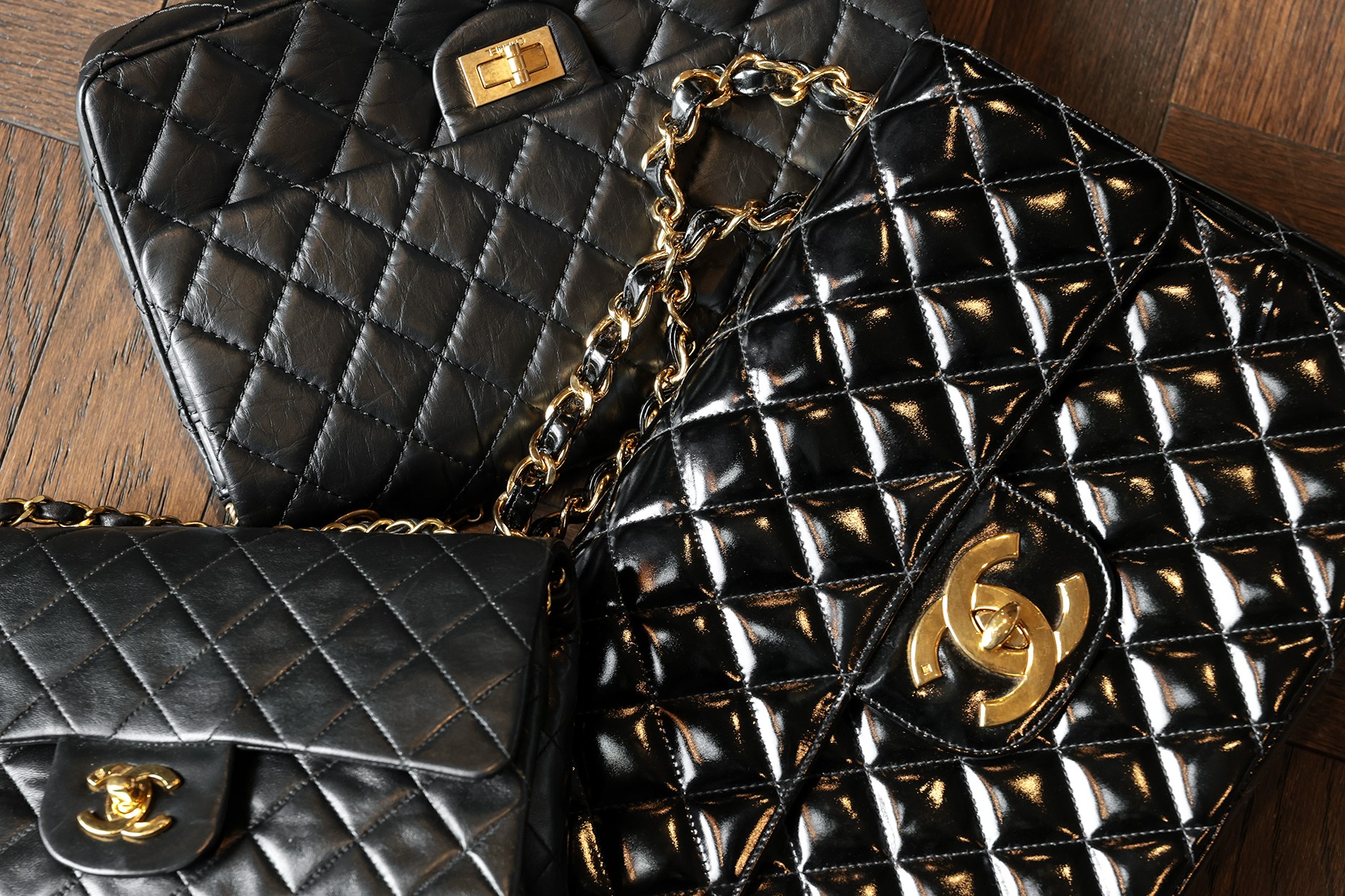
Chanel’s legacy of timeless design and meticulous craftsmanship is matched only by the intrigue surrounding its authentication process. At the heart of this lies the Chanel date code—a seemingly simple serial sticker that has played a pivotal role in verifying the authenticity and age of Chanel bags for decades. But as with all things Chanel, it’s a little more complex than it seems.
Whether you're a seasoned collector, a first-time buyer, or simply curious about the history behind these elusive codes, this guide will walk you through everything you need to know. From decoding the numbers to understanding what changed in 2021, here’s your expert breakdown of Chanel date codes.
What Is a Chanel Date Code?
A Chanel date code is a unique serial number printed on a sticker, typically found inside the bag. Introduced in the mid-1980s, these codes helped the brand—and later, buyers and resellers—track the production period of each piece.
While the code itself doesn’t provide information like the specific month or factory, it can reliably indicate the production year. When paired with craftsmanship details and authenticity cards, it forms a key part of the bag’s identity.
The Evolution of Chanel Serial Codes (1984–2021)
While Chanel has never officially published a complete reference for its serial number system, the luxury resale industry widely agrees on a well-documented progression of formats, security features, and stylistic changes over the years. These serial codes, which first appeared in the mid-1980s, have long served as a helpful tool in dating and authenticating Chanel handbags. Below, we’ve outlined the most recognised timeline of changes—from the early 6-digit stickers through to the introduction of NFC microchips—based on trusted knowledge from our professional authenticators at Xupes, archival market data, and years of experience in the pre-loved space.
1984–1986: The First Serial Stickers — 6-Digit Format
Chanel began using serial numbers in 1984 as part of a broader effort to combat counterfeiting. These early stickers featured a 6-digit code starting with the number 1 (1XXXXX), printed in black on a white sticker and placed under a layer of clear adhesive. Although minimal in design—without any holograms, logos, or glitter—these serials marked a pivotal shift in Chanel’s quality assurance and authentication practices. Importantly, this period also saw the introduction of Chanel’s first authenticity cards, designed to mirror the serial number inside the bag. Bags produced before 1984 will not have a serial sticker or authenticity card, making this era the official start of traceable Chanel handbag production.
1986–1988: The Introduction of 7-Digit Stickers
In 1986, Chanel transitioned from its short-lived 6-digit format to a 7-digit serial number, introducing a more structured approach to handbag authentication. These stickers were white with black printed numbers, often beginning with a zero (0XXXXXX), though some early numbers still began with 1 or 2 and appeared as 6-digit codes. Rather than featuring two standalone CC logos, these stickers were printed with a repeating Chanel logo pattern across the background and covered with a slightly opaque protective film.
Additional design details included a scooped or indented left edge on the sticker, and a distinctive font: the number 0 had no strikethrough, while the number 1 featured small serifs (or “feet”). These subtle elements are often key indicators when authenticating bags from this period. While still free of holographic or glitter security features, these stickers marked an important evolution in Chanel’s anti-counterfeit measures and were paired with the newly introduced authenticity cards—black with a gold border, bearing the same serial number as found inside the bag.
1989–1991: Continued Use of the Original Format
Between 1989 and 1991, Chanel continued to use 7-digit serial numbers, now beginning with the number 1 (1XXXXXX). The sticker design remained consistent with the late 1980s format: a white label printed with numerous faint Chanel logos, covered with an opaque protective film, and placed discreetly inside the bag. The left edge of the sticker was indented or scooped, a detail that remained common throughout the early 1990s.
Typography during this period was consistent with previous series: the number 0 did not feature a strikethrough, while the number 1 retained its distinctive serifed feet—both of which are subtle but useful markers when assessing authenticity. Though still devoid of holographic or glitter elements, this era reinforced Chanel’s dedication to consistency and traceability during a time when counterfeit production was on the rise.
1991–1994: Early Signs of Enhanced Security
From 1991 to 1994, Chanel continued using 7-digit serial numbers, now beginning with 2. The serial sticker featured a white background printed with faint Chanel logos and black serial numbers, protected by a layer of opaque adhesive film. By this time, the sticker shape had shifted to a more uniform, rectangular format with solid edges, replacing the indented or “scooped” cut seen in earlier years.
The typography remained consistent with previous series: the number 0 did not have a strikethrough, and the number 1 featured subtle serifed feet. While Chanel had yet to introduce holographic or glitter-based security features, this period reflected an internal move toward more controlled production, consistent formatting, and subtle refinements in sticker design. Authenticity cards remained unchanged—black with a gold border and matching the number printed on the sticker inside the bag.
1994–1997: A Precursor to Security Innovation
Between 1994 and 1997, Chanel maintained its 7-digit serial number format, now beginning with 3 and 4. The serial stickers during this period remained white with black printed numbers, overlaid with a layer of opaque adhesive film, and printed with a repeating Chanel logo pattern in the background. By now, the solid-edged rectangular sticker shape was firmly standardised across all bag styles.
While these stickers still lacked overt security features like glitter or holograms, subtle typographic changes became more defined. The number 0 still did not feature a strikethrough, while the number 1 continued to have small serifed feet—both useful indicators when authenticating this generation of bags. Chanel also began improving production consistency, and the overall presentation of serial stickers and authenticity cards became more uniform.
This period didn’t introduce new anti-counterfeit technologies, but it served as a quiet lead-up to the next era—where Chanel would soon begin implementing layered security elements. Bags from this time are among the last of the “pre-hologram” generation and are still widely found in the resale market today.
1997–1999: The First Holographic & Tamper-Proof Stickers
Between 1997 and 1999, Chanel introduced its first significant overhaul to serial sticker security, beginning with the 5XXXXXX series. While still using the 7-digit format, this period marked the transition into multi-layered authentication features that would define the next two decades.
Early 5-series stickers featured a white background with black printed numbers, overlaid with a clear protective tape. A repeating Chanel logo pattern was printed in the background, and from 57XXXXXX onward, some stickers began displaying two Chanel logos above the serial number. This marked the beginning of Chanel’s move toward visible, layered security.
As the series progressed:
- 0s had a strikethrough in serials beginning with 50, 51, 57, 58, and 59
- 0s had no strikethrough in serials starting with 52–56
- 1s featured small serifed “feet” beginning from 57XXXXXX onward
From 57XXXXXX, additional security enhancements were rolled out, including:
- "X-cut" tamper lines, designed to damage the sticker if removed
- A dark vertical line on the left side of the sticker
- The word CHANEL printed vertically along the right side
- Gold speckles and micro-glitter embedded throughout the sticker for added visual complexity
Although not all bags within the 5-series included every feature, the latter half of this period introduced a high-security standard that made Chanel stickers significantly harder to replicate. Authenticity cards remained consistent—black with a gold border—but became increasingly refined in printing and card weight.
2000–2005: Chanel’s Standardised Security Sticker
From 2000 to 2005, Chanel serial stickers reached a new level of consistency and sophistication. Still using a 7-digit format, now beginning with 6, 7, 8, and 9, these stickers featured a robust suite of anti-counterfeit features that became the gold standard in Chanel authentication.
The sticker itself was white with black printed numbers, overlaid with clear adhesive tape embedded with a number of security details. Most notably, each sticker included:
- Two interlocking Chanel logos above the serial number
- A vertical “CHANEL” logo printed along the right edge of the tape
- A dark vertical line running down the left side
- Gold speckles and iridescent glitter dispersed across the tape
- Discreet “X-cut” lines to prevent sticker removal without visible damage
The typography was equally consistent throughout this period:
- 0s had strikethroughs
- 1s featured small serifed feet
These features were introduced early in the 6XXXXXX series and carried through reliably to the end of the 9XXXXXX range in 2005. Combined, they formed a visually complex and highly secure sticker format that proved extremely difficult for counterfeiters to replicate. Authenticity cards continued to accompany each bag, maintaining the black and gold design, but with refined foil quality and print clarity over time.
This era marks the final phase of Chanel’s 7-digit system before the brand transitioned to 8-digit codes—ushering in a new chapter of traceable, high-security luxury.
2005–2021: Peak Security and Consistency
In 2005, Chanel transitioned from 7-digit to 8-digit serial numbers, starting with the 10XXXXXX series and continuing sequentially through the 31XXXXXX range. This change accommodated increasing production volumes and enhanced the brand's authentication measures.
Key Features of the 8-Digit Serial Number Stickers:
- White Sticker with Black Printed Serial Number: Each sticker displayed an 8-digit serial number in black font on a white background.
- Transparent Overlay with Security Elements: The sticker was covered with a transparent tape featuring:
-
- Two interlocking Chanel CC logos above the serial number.
- A vertical "CHANEL" inscription on the right side.
- A dark vertical line on the left side.
- Gold speckles and iridescent glitter dispersed throughout the tape.
- "X-cut" lines designed to damage the sticker if removal was attempted, deterring counterfeiting.
Typography Details:
- Strikethrough Zeroes: The numeral "0" featured a strikethrough line, a consistent trait in authentic stickers from this period.
- Serifed Ones: The numeral "1" had small serifed feet, distinguishing it from counterfeit versions that often used sans-serif fonts.
Authenticity Cards:
Alongside the serial number stickers, Chanel continued to provide black authenticity cards with gold borders. These cards bore the same 8-digit serial number as the sticker inside the bag, ensuring consistency and aiding in the authentication process.
This era represents Chanel's most consistent and secure period regarding serial number authentication. The combination of intricate sticker features and matching authenticity cards made it increasingly challenging for counterfeiters to replicate genuine Chanel bags.
2021–Present: Microchipped Metal Plates — Chanel’s Digital Authentication Era
In 2021, Chanel made its most dramatic shift in authentication to date, phasing out both serial number stickers and authenticity cards in favour of an embedded NFC microchip. This technology, housed discreetly within a small metal plate inside the bag, marked the beginning of a fully digital, internal tracking system—offering greater brand control and enhanced anti-counterfeiting protection.
The microchipped metal plate typically features an 8-character alphanumeric code and a laser-engraved Chanel CC logo, colour-matched to the bag’s hardware. Placement varies slightly depending on the style—most often found stitched into the lining, flap, or inside a pocket. In Wallet on Chain styles, it’s usually found tucked inside a zippered section.
Unlike the older system, the microchip cannot be scanned by the public or resellers. It uses Near Field Communication (NFC) technology and can only be read with Chanel’s proprietary in-store equipment, allowing staff to access production, purchase, and model details directly from the chip. The microchip is securely encoded and designed to store internal authentication data without the need for visual inspection.
This update also eliminated authenticity cards entirely—Chanel no longer provides them with microchipped bags. Importantly, a genuine Chanel bag will never feature both a serial sticker and a microchip, so any bag claiming to have both should raise red flags.
This new system represents Chanel’s most secure approach to authentication to date. And while it poses challenges for independent verifiers in the resale space, it signals the brand’s commitment to innovation, exclusivity, and traceability in an increasingly digital world.
How to Use Chanel Serial Codes to Date a Bag
Each Chanel serial number corresponds to a general production year. While there may be slight overlaps due to batch production and international releases, this table is a trusted reference point used throughout the luxury resale industry.
| Serial Number Begins With | Production Year |
| 1***** | 1984-1986 |
| 0****** | 1986 |
| 1****** | 1989–1991 |
| 2****** | 1991–1994 |
| 3****** | 1994–1996 |
| 4****** | 1996–1997 |
| 5****** | 1997–1999 |
| 6****** | 2000–2001 |
| 7****** | 2001-2002 |
| 8****** | 2003-2004 |
| 9****** | 2004-2005 |
| 10****** | 2005 |
| 11****** | 2006 |
| 12****** | 2008 |
| 13****** | 2009 |
| 14****** | 2010 |
| 15****** | 2011 |
| 16****** | 2012 |
| 17****** | 2012-2013 |
| 18****** | 2013 |
| 19****** | 2014 |
| 20****** | 2014-2015 |
| 21****** | 2015 |
| 22****** | 2016 |
| 23****** | 2016-2017 |
| 24****** | 2017 |
| 25****** | 2018 |
| 26****** | 2019 |
| 27****** | 2019 |
| 28****** | 2019–2020 |
| 29****** | 2020 |
| 30****** | 2020–2021 |
| 31****** | 2021 (final sticker year) |
Note: Bags from 2021 may feature either an 8-digit serial code or the newly introduced microchip, depending on the season and production batch.
Authenticity Cards: A Crucial Companion
Introduced alongside the sticker, Chanel authenticity cards bear the same serial number and are designed to accompany the bag from boutique to buyer. Over the years, they evolved in style—gold borders, holographic dots, and font changes all reflect their era.
However, these cards can be faked more easily than the bags themselves. A genuine card will match the sticker exactly in font, spacing, and number. Mismatches are one of the most common red flags when authenticating.
Note: Post-2021, authenticity cards are no longer included, as Chanel transitioned to embedded microchips.
How Counterfeiters Replicate Serial Stickers
As Chanel bags increased in value, counterfeiters became more sophisticated. Some even produce counterfeit stickers accurate to the expected year range. Here’s what to look for:
Incorrect Font or Spacing: Authentic Chanel serial numbers have extremely precise font characteristics—such as slim, evenly spaced characters, and distinctive strikethroughs in zeroes. Any deviation in letter shape, alignment, or spacing is a common tell, especially in older fakes.
Stickers Placed on Fabric Instead of Leather or Lining: While Chanel typically places serial stickers on leather or synthetic lining, there are exceptions—especially in vintage fabric styles or jersey bags, where the sticker may appear on textile or on an interior brand tag. However, if the sticker looks loosely applied, sits awkwardly, or lacks the usual protection film, it could indicate tampering or a replica component.
Inconsistent Wear: A bag showing signs of heavy use should not have a flawless serial sticker. A crisp, untouched sticker in a soft, well-loved vintage bag may indicate it was added later—often a sign of counterfeit replacement.
Stickers with No Glitter, Watermark, or Holographic Strip in Later Models: From the late 1990s onward, Chanel incorporated increasingly complex security features into the sticker. If these elements—like interlocking CC holograms or iridescent overlays—are missing from a bag that should have them, proceed with caution.
Fake Authenticity Cards with Gold Trim Too Thick or Misaligned: Authenticity cards are often faked, and while the serial number might match the sticker, flaws in foil printing or layout are common giveaways. A misaligned border or overly thick gold trim is one of the first signs an expert will spot.
Quick Tips for Spotting Chanel Date Code Red Flags
While serial codes are just one piece of the authentication puzzle, these quick visual checks can help identify red flags that warrant a closer look:
Mismatch: Serial sticker and authenticity card don’t match. The number on the sticker and the card should be identical—no exceptions. Mismatched codes are one of the clearest indicators of tampering or incomplete provenance.
Wrong Format: Serial code format doesn’t match production year. A 6-digit or 7-digit code on a bag that should have an 8-digit code is a strong warning sign. Be sure to cross-reference the serial format with Chanel’s known timeline—though keep in mind, some late-in-the-year releases may carry overlapping ranges.
Poor Quality: Sticker is peeling, blurry, or missing the glitter overlay. Age-related wear is normal, but the sticker should still retain some clarity. In post-1997 bags, the absence of holographic or glitter detailing is a concern—unless the bag is vintage and authentically predates these features.
Incorrect Placement: Sticker is loose, floating, or oddly positioned. Chanel places its stickers deliberately—typically in a lower corner of the lining, or in some vintage cases, on a fabric tag. If it appears freshly affixed, misaligned, or too prominently displayed, it’s worth a second look.
Too Perfect: A flawless sticker in a vintage bag that shows heavy wear. A pristine sticker in an obviously used bag can be a red flag. It may suggest the original sticker has been replaced—common in replicas—or that the bag’s condition and serial don’t align.
While Chanel serial numbers remain one of the most useful tools in dating and verifying a bag, they are only one part of the bigger picture. Craftsmanship, hardware stamps, logo embossing, stitching, and materials must all be reviewed together.
As Chanel continues to innovate with microchip authentication, expert verification has never been more essential. At Xupes, every Chanel piece is thoroughly vetted by our in-house authenticators to ensure confidence with every purchase.


